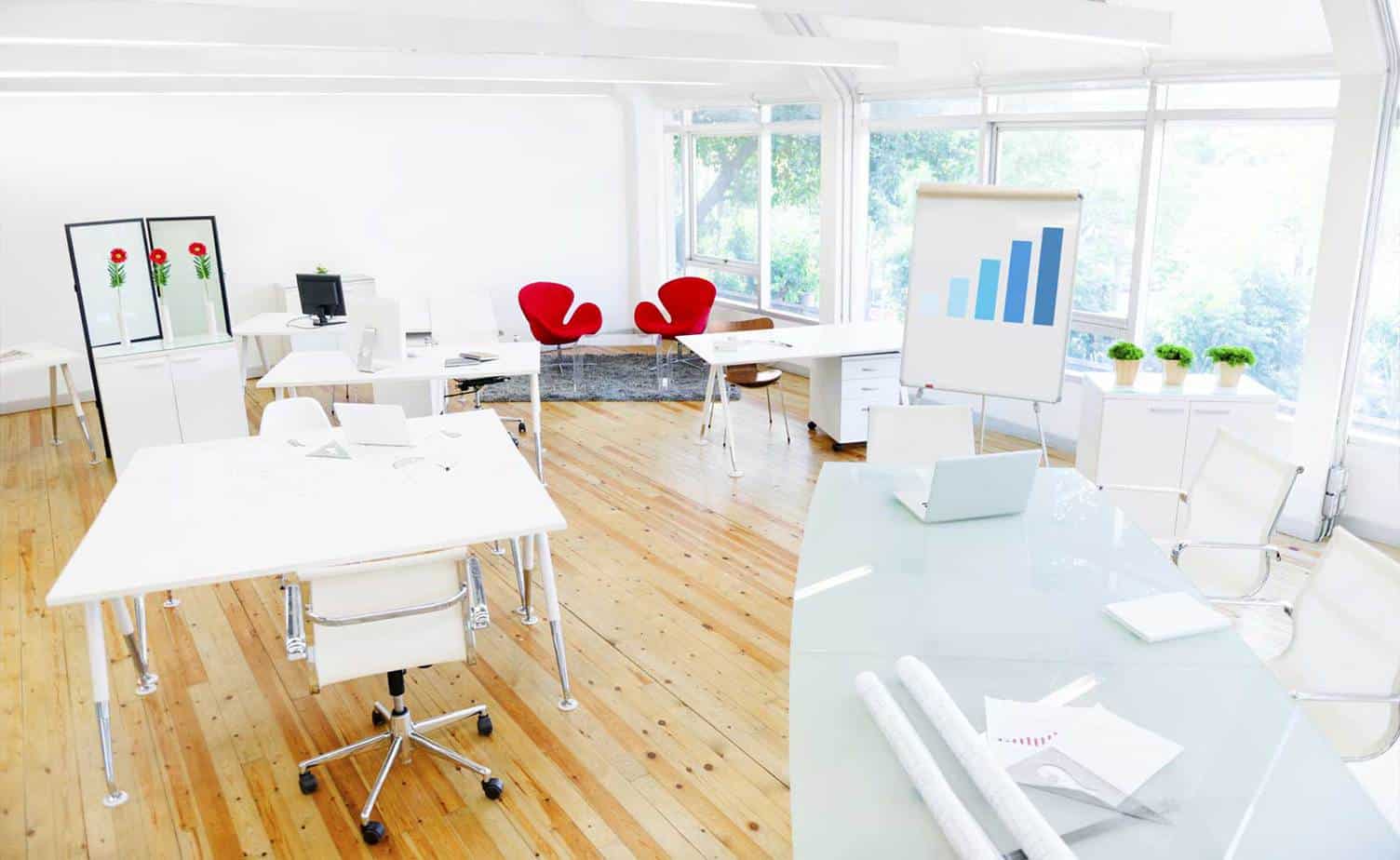Let’s be honest: We all feel a tinge of envy when we learn about the new state-of-the-art campus that a tech giant has built in the heart of Silicon Valley. Google’s headquarters includes coffee bars, Lego play areas, and a dog friendly work environment. Food at Google’s cafeterias is free and healthy foods and snacks are available for employees. Employees have standing desks, some of which include attached treadmills so employees can walk while working. The campus has every kind of gathering space, from large open spaces for collaborative work to tiny nooks for private meetings.
Facebook’s Frank Gehry-designed, sun-drenched headquarters is the largest open-office workspace in the world. Atop Building 20 is a nine-acre rooftop garden. Facebook offers numerous dining choices for employees and snacks are free. As there are no cubicle walls to partitions, employees book small conference rooms if they need to meet privately.
An office environment can have a profound effect on your workers’ productivity. It is the building block for a healthy, efficient environment. However, most companies don’t have the resources to operate four free cafeterias or to hire a world-renowned architect to design their offices. But there are lessons that much smaller businesses can take away from the work environments being installed in Silicon Valley.
- Consider the layout of an office. The locations and positions of workspaces within an office are important. Different departments and employees have different needs. Catering workstations to an individual’s needs and preferences can increase productivity individually as well as a department-wide.
- Improve indoor air quality. Poor ventilation can decrease employee performance. Employees who work in well-ventilated offices with low levels of indoor pollutants and carbon dioxide have shown significantly higher cognitive functioning scores in crucial areas such as responding to a crisis or developing strategy.
- Some employees need silence to work while others work better in open environments with background noise. Consider offering both open floor space for workers who prefer collaborative surroundings as well as sound-proofed or quieter workspaces where employees who need silence can work without being distracted.
- Keep the temperature as close to 71°F as possible. Studies have shown that when working in optimal temperatures, employees improve the speed and accuracy of their work.
Decorating and furnishing a workspace with the right tools is crucial.
- Avoid painting your office dark colors. Use light, natural colors to enhance feelings of openness and calm. Blue, green, and violet hues tend to be more relaxing and calming. Red, orange, and yellow inspire warmth, creativity, and collaboration.
- Look for ergonomic chairs. An uncomfortable chair can decrease productivity and increase the number of aches and pains felt by employees, prompting them to step away from their work more frequently.
- Offer standing desks. Mounting concerns about the risks of sitting for long periods of time have lead to more companies offering their employees standing desks. They help lead to improved productivity, well-being, and concentration.
- Two screens are better than one. Using two computer monitors has shown to increase productivity among workers. By giving workers a larger visual field, they are able to perform tasks more efficiently.
Your office’s lighting can significantly impact the productivity of your employees.
- Offer as much natural lighting as possible. Workers in windowless offices spend 15% less time staying on task than their co-workers in offices with windows.[
- Consider task lighting. Task lighting provides improved illumination to a specific workspace or task area. Desk lamps, reading lamps, and under-cabinet lights found in many offices are all examples of efficient task lighting.
- Try to avoid overhead lighting. It can cause headaches, eye strain, and fatigue.
One example of how these principles can be employed to improve a workspace comes from Intel.Its Portland offices once consisted of endless rows of gray cubicles, low ceilings, and fluorescent lighting. Intel remodeled the office, repainting gray walls yellow, purple, and white. Cubicle walls were lowered so employees could be seen and see each other and communal lounges were improved with flat-screen TVs, armchairs, and sleek kitchens. The changes were designed to promote innovation by creating plenty of space where people could work in groups, rather than be isolated at their desks.
Those who work from home face challenges of their own in designing a work environment that maximizes productivity. By making small adjustments to a home office, you can improve your efficiency as well as work-life balance.
- De-clutter and stay organized. Just as you would in an employer’s office, keeping mess to a minimum will help your mind stay on track. Keep all of your work materials in one space, as it is important for you to be able to find what you need and be as efficient as possible within your workspace. You will also want to keep the non-office space in your home free of work items. This promotes a healthy balance and allows you to relax at home when you are not working.
- Keep your workspace bright and well-lit. Think about moving your desk near a window, or pick appropriate lighting for your needs.
- Get a plant. Not only are they aesthetically pleasing, but indoor plants can help keep the air in a room clean and well-oxygenated.
- Make your workspace strictly for working, and keep distractions at a minimum. Working from home can mean getting easily distracted with children, barking dogs, a ringing doorbell, laundry, cooking, you name it! By establishing set working hours and keeping your workspace separate from your personal life, you can maintain a healthy work-life balance and avoid distractions.
While not every office can afford the amenities Google or Facebook provide, improving a workspace to be more efficient does not require expensive luxuries. Through careful planning, appropriate decor, and wise use of space, any office can increase the happiness and productivity of its employees. It only takes small adjustments to make a big difference.
